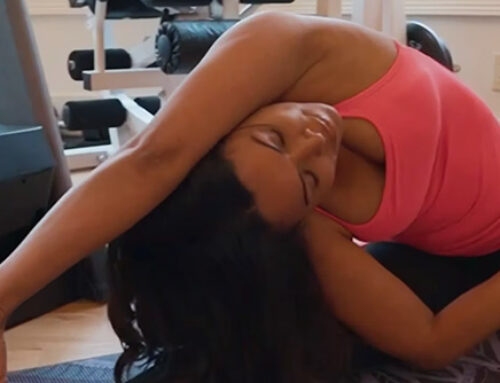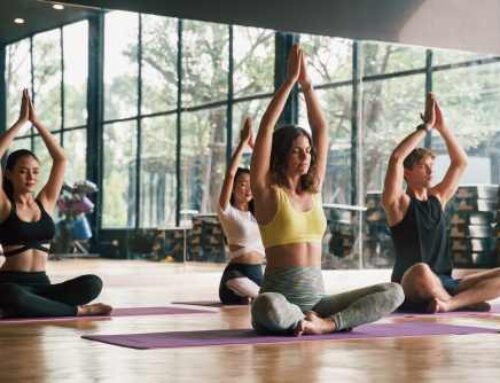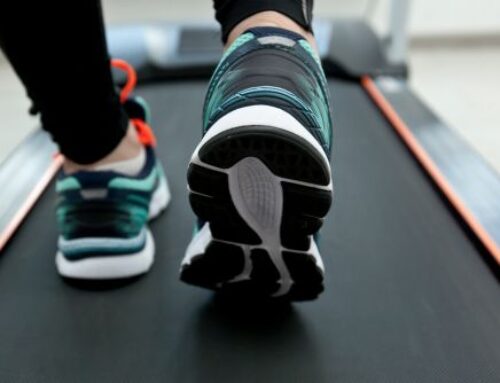Hamstrings can fall asleep when you sit too long. They tighten up and become inflexible – on some people, this can cause pain. This is bad enough, but hamstrings connect structurally to so many muscle groups that this can create posture problems over time, problems that Standing Forward Bend can help you fix. Uttanasana has many therapeutic applications, as well as the ability to relieve your headache and reduce anxiety.
Read on to learn the specific health benefits you can get from practicing Uttanasana as well as how to perform the pose safely and correctly. I recommend this pose primarily as a hamstring and hip stretch, but many people in many stages of life can benefit from regularly practicing Uttanasana.
Benefits of Standing Forward Bend
Standing Forward Bend offers such a good stretch in your hamstrings, hips, and calves that many people who need the pose won’t be able to achieve the full stretch at first. If you work up to it though, your sleepy, tight, and inactive hamstrings can get a great wake-up call with this pose.
At the same time, your thighs and knees get stronger from maintaining Uttanasana. The stretch works on your abdomen too, stimulating your kidneys and liver, improving your digestion, and helping you relieve uncomfortable symptoms of menopause. Standing Forward Bend can be integrated into your standing sequence to manage abdominal discomfort from many sources, and even offer therapy for infertility.
Due to its energizing stretch, Standing Forward Bend can help you calm down, reducing the buildup of fatigue and anxiety that can crop up over the busy week (or just one busy day!). This makes Uttanasana therapeutic for high blood pressure as well.
If you want to reap the benefits of this pose, follow these instructions.
How to Do the Pose
Like so many standing poses, the easiest way to transition into Standing Forward Bend is to start in Mountain Pose. As you breathe out, bend forward using the joints of your hips to make the bend. Try to open the front of your torso and make it feel nice and long as you bend.
As you let your head hang freely, hold onto your elbows with the opposite hands. You should feel your heels digging into the ground and your tailbone and buttocks lifting. Make sure not to lock your knees! Bend your thighs a little inward to make sure you don’t.
In fact, those who can’t quite make the bend successfully can do this pose modified with your knees bent until you gain the right flexibility.
Depending on how flexible you are, you can place your fingers on the floor, grab your ankles, press your palms flat on the mat, or use a block to rest your hands higher. No matter what, make sure your front torso is long and your knees are straight (unless you’re doing the modified version).
You should feel the front of your thighs firming up. It’s this action of activating your quads that takes the load off your hamstrings. You might even feel them release tension in this pose! Make sure your hips are over your ankles and the weight of your body is firmly on the balls of your feet.
Feel your chest rise and fall as you breathe in. As you exhale, push the pose deeper (if you can). Make sure your head is still loose. You can practice Standing Forward Bend for up to a minute. When you’re ready, unbend while keeping your back flat, with your hands on your hips. You can do this, rotating between Uttanasana and Mountain Pose, as many times as you like.
The Takeaway
Standing Forward Bend offers a great wake-up call for your sleeping hamstrings, which could have become tight and weak from sitting too much. In addition, the pose can jumpstart sluggish digestion, reduce anxiety, and promote a serene sense of calm. Those suffering from back issues, hip issues, fatigue, menstrual discomfort, and more can use Uttanasana to find some relief.





Leave A Comment